Summer 2009 SST Unit in Germany
Follow along on our journey! You can click on any square picture to see a larger image.
Tue, 21 Apr 2009Anfänge/Beginnings in Jena Joe arrived in Jena April 15 and is anxiously awaiting the arrival of
Jo-Ann at the end of this week and the students the following week. Conversations with individuals, seeing what is the same and what is different in the city, memories of earlier SST Jena experiences--all contribute to the anticipation of what the 2009 unit will learn and experience while in Germany. Jena's monocular tower continues to dominate most views of the center city. Spring has arrived and the hills that surround us are alive with fresh green leaves and flowering trees and bushes. The banks of the Saale river welcome young and old alike. Local media are buzzing with news that the recently-completed Autobahn tunnel at the city's edge has sunk six centimeters. Tram drivers still seem willing to wait patiently when they see passengers like Joe running to jump on board. Wolfgang B. of jenakolleg (http://www.jenakolleg.de), together with colleague Kerstin P. and office manager Kerstin M., have once again worked out myriad details for our language instruction and excursions. Ruth R. and husband Klaus have again juggled the details and contacts necessary to find host families for our students to live while in Jena. Joe is busily contacting various church and social service agencies to line up service placements for the second half of the term. All are a bit sad to realize this is the last SST group scheduled for Jena. Included here are pictures of some of the homes students will find themselves living this year. New homes, older homes, homes high on the hill, and down in the valley. Public transportation rides to the Christliches Gymnasium (Christian high school), where we will again hold our language classes, will range from 3 minutes to 45 minutes. One lucky student will climb down more than 100 steps each time s/he wants to take the bus. There will probably not be another blog update until after the students arrive. Check back around May 1!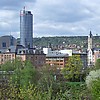
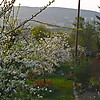
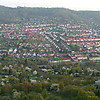
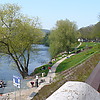
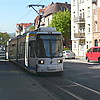
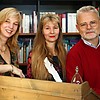
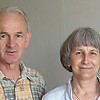
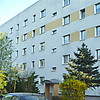
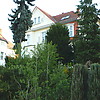
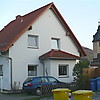
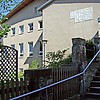
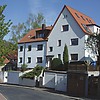
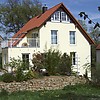
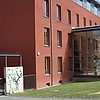
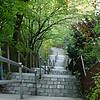
Thu, 30 Apr 2009
Safe arrival in Jena After a brief blessing and a
short orientation with Jo-Ann, we started to learn our way around Jena's public transport system. The reward was getting to the center of Jena where students, leaders, and jenakolleg friends enjoyed a first German meal at the venerable Zur Noll restaurant. Kerstin P. from jenakolleg took us on a short orientation tour. We then returned to the school, where our host families came to claim us.
This evening we are beginning to learn to know the families who are welcoming us into their homes for the next six weeks. Tomorrow, May 1, is a holiday here, but we'll get together briefly in the morning to share first impressions with each other and begin to think more about the weeks ahead. 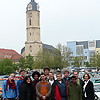
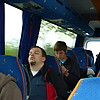
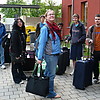
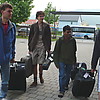
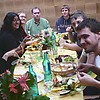
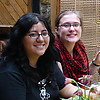
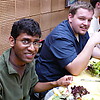
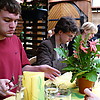
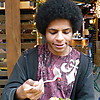
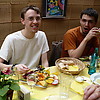
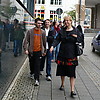
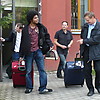
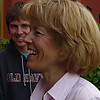
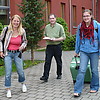
Wed, 6 May 2009
First week On Tuesday we climbed into the same bus that had brought us from the airport to Jena last Thursday and
headed for the town of Eisenach on the western edge of Thuringia. Perched
above the town is the Wartburg Castle, founded almost a millenium ago. Its walls sheltered Martin Luther in 1521-22, and we were able to see some of
Luther's own handwritten translations of portions of the Bible into German. Three centuries before Luther, the castle was home to St. Elisabeth of Hungary, renowned for acts of Christian charity. Three centuries after Luther, the castle served as a symbol of a growing German nationalist sentiment, and UNESCO recognizes it as a "World Heritage" site of unusual cultural significance. In the Middle Ages it
overlooked significant trade routes and from 1949 to 1990 sat above the border dividing East and West Germany.
In the afternoon we took up the trail of Eisenach's most famous native, Johann Sebastian Bach. The historic Bach House museum has displays ranging from antique instruments--demonstrated for us by a museum staff member--to forensic reconstructions of Bach based on a 19th-century bronze cast of his skull. Alas, the museum does not yet comment on GC alumnus' Bradley Lehman's Bach tuning.
After touring the museum we headed to Arnstadt, one of Thuringia's oldest cities, and the place where at age 18, J.S. Bach was first employed as an organist. The current organist of the Bach Church there provided details of
the restoration of the 1703 organ, brand-new at the time of Bach's employment. He then played several pieces composed by Bach at Arnstadt before moving to a demonstration of a 1913 organ housed beneath the 1703 organ. We joined him at the newer organ for a closer look at how organs operate. Some of us even tried the
1913 organ for ourselves. We returned home tired, but grateful for the expert guidance of jenakolleg's Bernd Z. on this day of learning. (Bernd joined us again Wednesday afternoon to share his perceptions of growing up in the German Democratic Republic.)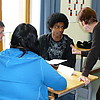
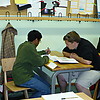
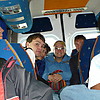
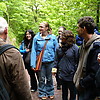
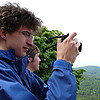
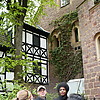
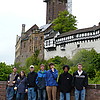
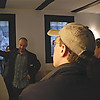
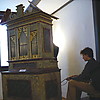
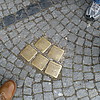
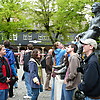
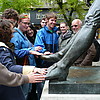
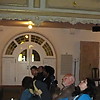
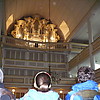
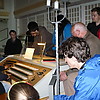
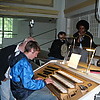
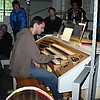
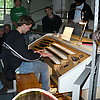
Sat, 9 May 2009
Jena tour After traipsing through the garden
of German scholar-poet Friedrich
Schiller, the market square, the old
university courtyard and points in
between, we headed for the observation
deck of Jena's landmark tower, almost 120 meters above the ground. This
vantage point helped us make better
sense of Jena's hills and valleys.
Finally on Friday afternoon, at the
close of what seemed like a very
full week of learning, we gathered
at Jo-Ann & Joe's apartment. Jo-Ann led us in discussion of our week's
experiences. We included a few quieter moments of reflection around the small candleholders we had made during our first gathering on May 1.
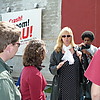
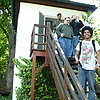
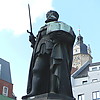
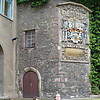
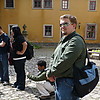
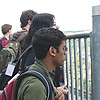
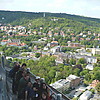
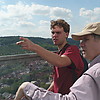
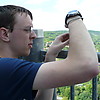
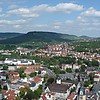
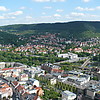
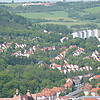
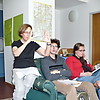
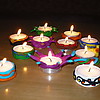
Thu, 14 May 2009
Botanical garden Photos from our botanical garden visit are courtesy of Matt.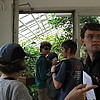
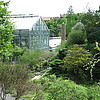
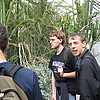
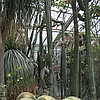
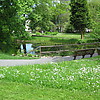
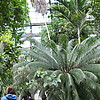
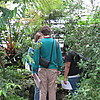
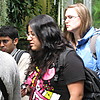
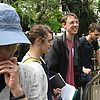
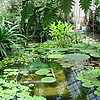
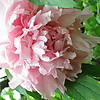
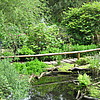
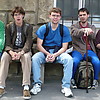
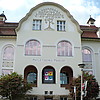
Naumburg excursion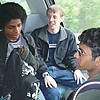
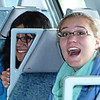
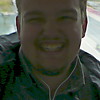
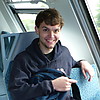
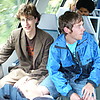
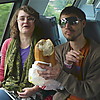
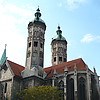
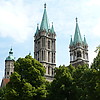
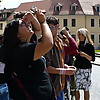
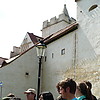
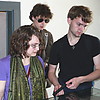
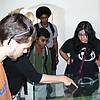
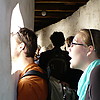
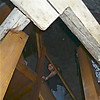
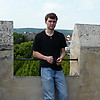
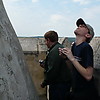
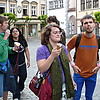
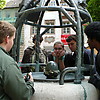
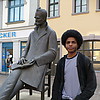
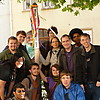
Thu, 21 May 2009
Off to Kindergarten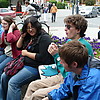
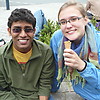
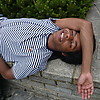
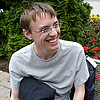
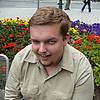
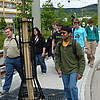
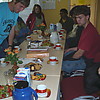
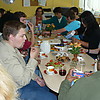
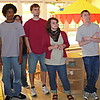
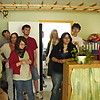
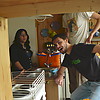
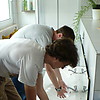
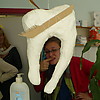
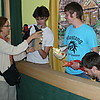
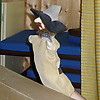
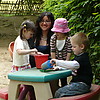
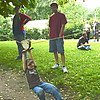
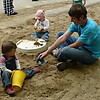
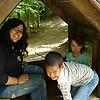
Ascension Day hike (Other students in the unit will be doing this or a similar hike on Monday or Tuesday afternoon.)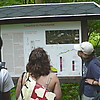
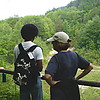
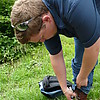
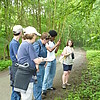
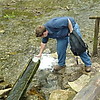
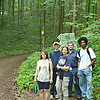
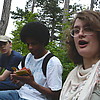
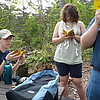
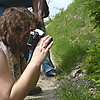
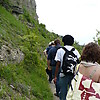
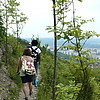
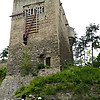
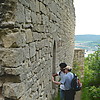
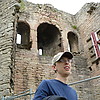
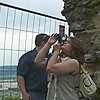
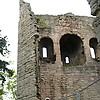
Sun, 31 May 2009
Schott Museum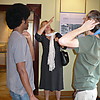
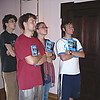
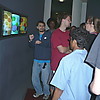

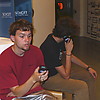
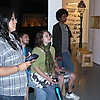
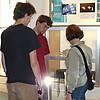
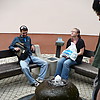
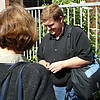
Buchenwald We choose to represent this visit by a single photo: the camp's main gate with its cyncial motto "To each according to his merits."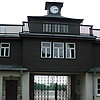
Erfurt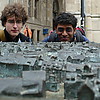
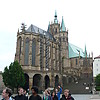
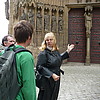
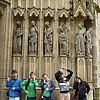
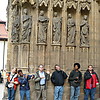
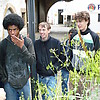
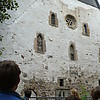
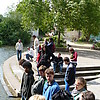
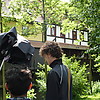
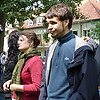
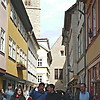
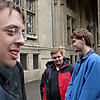
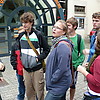
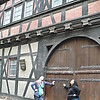
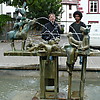
Fri, 5 Jun 2009
Berlin, Day 1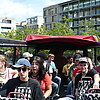
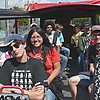
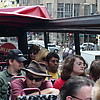
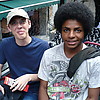
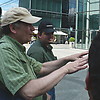
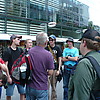
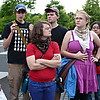
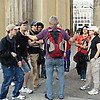
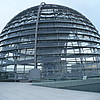
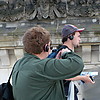
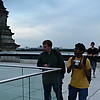
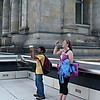
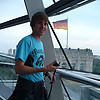
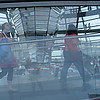
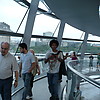
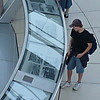
Berlin, Days 2 & 3 Thursday morning found us back on the sidewalks of Berlin: a visit toGerman playwright Bertolt Brecht’s home and then a tour of the Dorotheenstädtischer Friedhof next door where Brecht and numerous other famous Berlin residents are buried. We wandered through a neighborhood that once housed many of Berlin’s Jews, looked at late 19th-century residential-industrial structures, and passed through the Nikolai quarter—Berlin’s birthplace. To finish off the morning we explored public spaces near Berlin’s “Red Town Hall”—nicknamed for its brick exterior—and ended at Alexanderplatz, a main center in eastern Berlin. During the afternoon, we again headed in smaller groups to different museums, including the German Historical Museum. At 7 p.m. we climbed on the train to return to Jena, filled with the experiences of our 3-day sojourn in this amazing city.
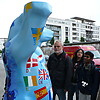
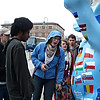
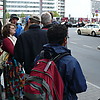
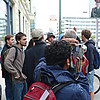
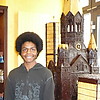
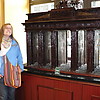
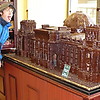
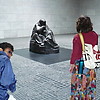
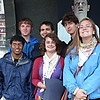
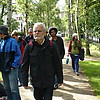
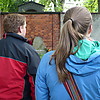
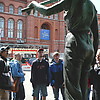
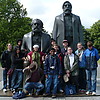
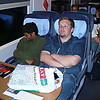
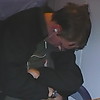
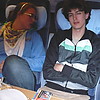
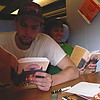
Thu, 11 Jun 2009
Weimar Weimar has been a center of significant German cultural and political activity over the centuries. Within a short walk of the railroad station, we encountered a Socialist-era monument to Ernst Thälmann, a leader of Germany’s Communist Party who was executed at nearby Buchenwald in 1944. Then the 19th-century Neues Museum, a Nazi-era bureaucratic complex, and not much farther, the 18th-century Baroque St. Jakob’s Church. Charlotte Vulpius, wife of the poet Johann Wolfgang von Goethe was buried there among the original resting places of other famous residents such as the 16th-century artist Lucas Cranach the Elder and 18th-century poet Friedrich Schiller. Much of our day was spent tracking places significant to these and other well-known Weimar residents such as the composer Franz Liszt. 2009 is the 90th anniversary of both the Weimar Republic and the Bauhaus school. Although local museums included exhibitions related to both anniversaries, we focused on Bauhaus, whose theories influence the design of much that we consider “modern.” We visited the building in which the Bauhaus school was housed 1919-1925, saw an introductory film, and visited an exhibition that showed objects—textiles, furniture, toys, ceramics, and more—produced by Bauhaus artist-craftspeople. At the end of the afternoon (and in-between downpours) we took a moment to celebrate with two students the birthdays they will have while we are at our service locations.
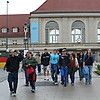
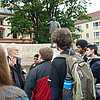
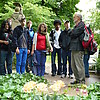
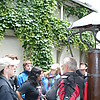
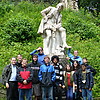
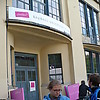
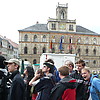
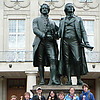
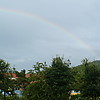
Sat, 13 Jun 2009
Family farewell event As the guests departed, the clean up began. The last dishes did not get put away until 11:30 p.m. Still, we had to get up Saturday morning for a final group meeting prior to our departure for service. All of us will depart Monday morning, singly or in pairs, for seven different locations. Our service locations will all be very different from Jena even though they are only 35 to 130 km from here.
This blog will probably not be updated until the beginning of July when Joe and Jo-Ann begin filing reports of their visits to service locations.
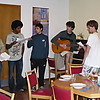
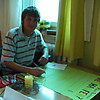
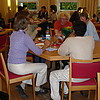
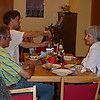
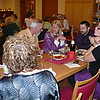
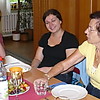
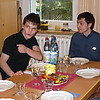
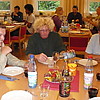
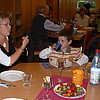
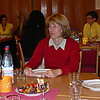
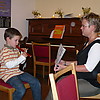
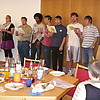
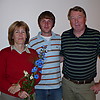
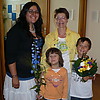
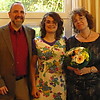
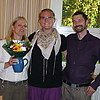
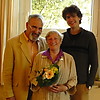
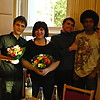
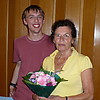
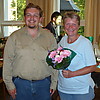
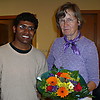
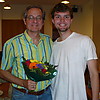
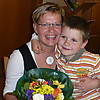
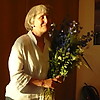
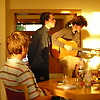
Thu, 2 Jul 2009
Ilmenau--David David lives in one of CJD’s two residential buildings—both interior and exterior still typical of the pre-1989 designs of East Germany. This week the building was bit noisier than usual, filled as it was with a lively crowd of young math campers. David has been helping as needed with diverse tasks, including landscape work, translating the Hausordnung (house rules) and webpages into English, and tending Bratwurst at the occasional Grillparty. Next week he will begin some interior repainting.
David’s supervisor, Herr E., joined David in showing us around four main buildings at CJD and an introductory tour of Ilmenau. Herr E. then hijacked all of us for an extended driving tour of the Thuringian Forest under whose ridges Ilmenau is nestled. Among other places, we stopped at Oberhof’s ski jumps and nearby winter sports training facilities. We also visited the Schneekopf,. At 978 meters just 5 meters shy of being Thuringia’s highest peak—though its observation tower elevated us to 1000 meters.
A visit to David’s favorite peak, the Kickelhahn that stands above Ilmenau will have to await another day.
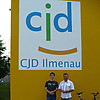
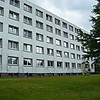
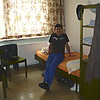
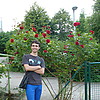
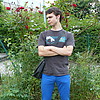
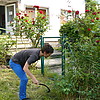
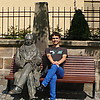
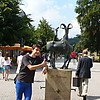
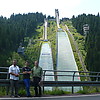
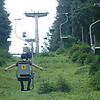
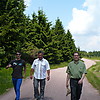
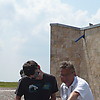
Sun, 5 Jul 2009
Chemnitz – Josh & Aaron The team meets at least once a week to reflect on recent encounters in the various programs and plan activities for the days ahead. Mornings for our SSTers here usually involve lots of cleaning—sweeping and washing floors, cleaning the kitchen, doing dishes, etc. Then come afternoon or evening shifts (sometimes double-shifts) in one of three main programs. Familien-Café provides a place for parents and children to drop by to talk and play. McTurtle is a time just for young children, often with singing and playing. Aaron recently guest-starred with his guitar at McTurtle--the children were delighted to have an American rock-star like him present! Josh and Aaron are most often involved with the Jugendclub Heilse (Salvation Army Youth Club). When working with Jugendclub, the guys prepare and serve snacks and drinks, as well as play board games inside or other games outside, based on what the youth who come are interested in doing. Weather forced cancellation of a recently-planned sandlot volleyball tourney, but Josh has helped increase the interest around the basketball hoop. The building where the guys live also provides venues for regular worship services, small (usually very loud) concerts, and other activities including the occasional used-clothing flea market, a small soundproof studio for bands to use to practice.
After Heidi, Aaron & Josh gave us a thorough tour of the building, the fellows folded their long legs into the tiny SST rental car and we headed over to Dresden for an afternoon of conversation and sightseeing. There, on this 4th of July, we still saw signs that had been posted to welcome President Obama the month before. Most of the buildings of Saxony’s capital were in ruins 60 years ago. Regional pride prompted elaborate reconstruction of notable palaces and public buildings, reestablishing a sense of Dresden’s cultural past. As you look at the pictures from Dresden, remember that most of the buildings in downtown Goshen have been standing longer than the current versions of the buildings in Dresden! Reconstructed arches proved to have practical as well as aesthetic value for us during a torrential afternoon downpour. Among other things, we visited part of the Saxon royal treasure collection to marvel at such wonders as 185 detailed faces carved into a single cherry pit. Life back at the Heilsarmee seems a bit more real to us than that of the Saxon dukes, and we were glad to return to Chemnitz that evening.
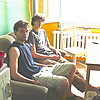
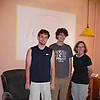
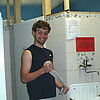
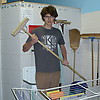
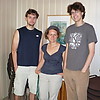
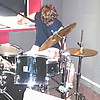
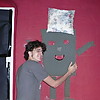
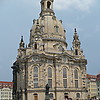
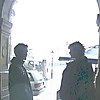
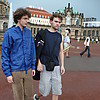
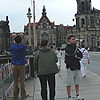
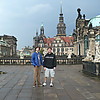
Thu, 9 Jul 2009
Aue – Rosemary After visiting Zion, we headed out to explore some of points of interest in the Erzgebirge (Ore Mountains) region surrounding Aue. Virtually all the region’s once flourishing mining industry has ceased. Production of handcrafted wooden toys and other objects continues to be economically important. One weekend, a co-worker had taken Rosemary to a local fair at Annaberg-Buchholz about 30 km from Aue. From the top of the ferris wheel Rosemary spotted an interesting looking church and so we chose that as our destination for the day. Enroute we stopped off at the Scheibenberg to look at a basalt cliff. Admittedly, we have seen a lot of old churches while in Germany, but the St. Annenkirche in Annaberg turned out to be unusually interesting both inside and out. Sitting at one of the highest points in town, the façade of this massive late Gothic church (foundation stone laid 1499) is made up of uncut rocks—most churches we have seen either have plastered exteriors or make use of cut stone blocks. Inside, a balcony surrounds three sides of the main nave and a series of 100 colored stone reliefs depict biblical and other religious scenes. There are also several beautiful altars in stone and wood. Heading back to Aue, we took a meandering route along the Czech border and through some more of the mountains, though heavy rain kept us from undertaking any additional short hikes.
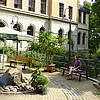
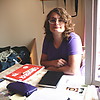
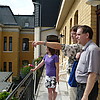
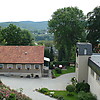
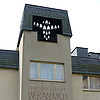
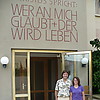
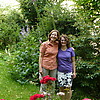
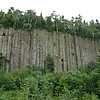
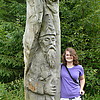
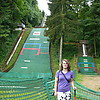
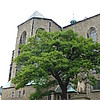
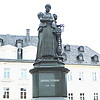

Kloster Volkenroda – Sarah & Mark At noon, we joined Mark & Sarah for the regular mid-day worship service in the Christus-Pavillion followed by lunch with other staff members. The weather forecast called, once again, for afternoon rain, so we had been thinking of visiting a cave not to far away. Alas, Sarah’s host family in Jena had already taken her there, so we risked a trip to Sangerhausen, a town with a well-preserved 16th-century center. The rain indeed poured down, but stopped just as we arrived at Sangerhausen, permitting a leisurely stroll through the old city, including (of course) stops at the town’s three main churches. After that, we visited the Europa Rosarium on the edge of town—with more than 8,000 species and types of roses, the most varied rose garden in the world. After inspecting the beauty and fragrance of that garden, we headed back to Volkenroda. When we got back we discovered, to our disappointment that we had missed a visit from Nick who had come to Volkenroda that afternoon with a group from Siloah’s children’s camp. Oh well … with just three weeks of SST left, we’ll soon see each other again.
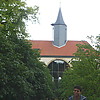
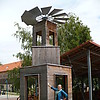
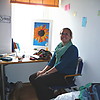
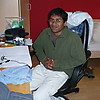
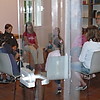
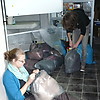
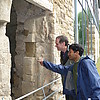
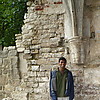
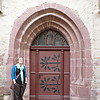
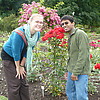
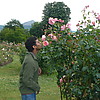
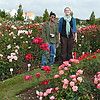
Mon, 13 Jul 2009
Allmenhausen – Gary & Patrick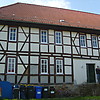

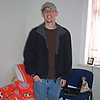
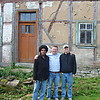
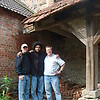
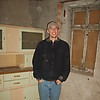
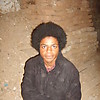
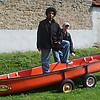
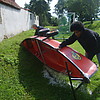

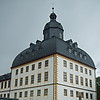
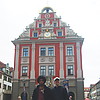
Tue, 14 Jul 2009
Neufrankenroda – Leah, Matt, Nick After Nick, Matt, & Leah showed us some of their favorite spots around Siloah, Joe took Jo-Ann and Leah to a nearby train station, and came back to pick up Matt & Nick in our no-more-than-four-person rental car. Leah had really enjoyed an earlier visit to Erfurt so that is where she and Jo-Ann spent the afternoon (without camera). Joe drove with Nick & Matt to a German national park located in the Hainich Forest—Germany’s largest deciduous mixed forest. There we walked along the Baumkronenpfad (tree top path), a path built through the trees at elevations ranging from 21 to 44 meters above ground.
We all reconvened at the end of the afternoon in Matt & Nick’s spacious room under the eaves. There we shared a bit of cake in honor of Nick’s birthday tomorrow and talked about the way the service portion of SST is flying by. Students are working on their final projects, and will come back to Jena on July 24 or 25. Hard to believe that in two weeks, the students will have arrived back in the United States!
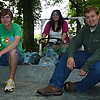
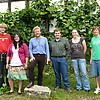
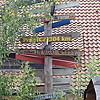
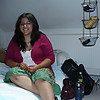
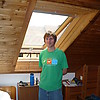
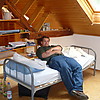
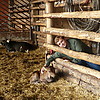
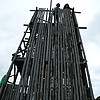
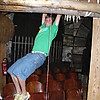
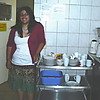
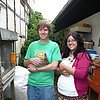
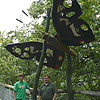
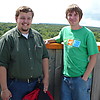
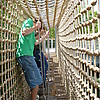
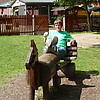
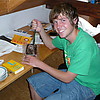
Sun, 26 Jul 2009
Safely back in Jena After several hours of talking, and getting our SST badges of honor, we hiked up to the Wilhelmshöhe. That elevation provides a splendid overlook of the Jenzig (one of Jena’s best-known hills) and the town itself. About a month ago, Goshen College paid for the renovation of two park benches at this overlook, adding small plaques thanking host families and local coworkers who have assisted GC since the first Jena SST unit in 1985. Although there were just 11 students in this unit—the last scheduled to come to Jena—a total of more than 350 GC students have come here in 18 units. We are glad that Jena now has a spot where GC’s gratitude for this collaboration is visible.
After visiting Jena’s lofty heights, we descended again to where the Saale River flows for a bit of ice cream. (Parents and friends can consult the next blog entry to guess which treat was ordered by which student.) Sunday we are spending with families and revisiting favorite spots in Jena. On Monday we meet again as a group—looking ahead to our return home and for a final group meal. Monday evening we climb on a bus that we hope will lull us into a few hours of rest before our flight home from Frankfurt on Tuesday morning. We will miss those we have learned to know here, but are also already anticipating reunions with family and friends back home.
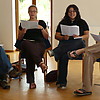
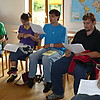
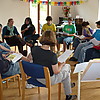
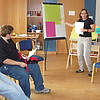
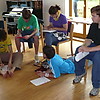
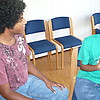
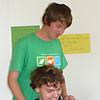
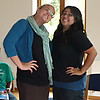
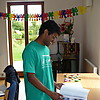
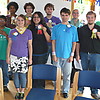
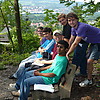
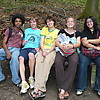
The Ice Cream Quiz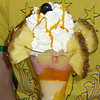
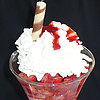
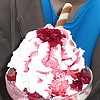
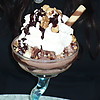
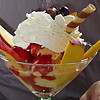
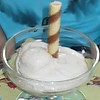
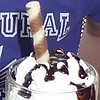
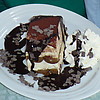
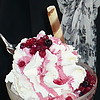
Mon, 27 Jul 2009
Ice Cream Quiz (Answer Key) Go to the previous entry to test your knowledge of your favorite German SSTer’s dessert tastes. The bus carrying our students to the Frankfurt leaves in about an hour from Jena. 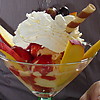
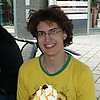
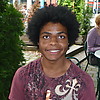
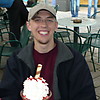
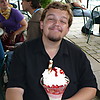
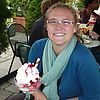
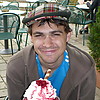
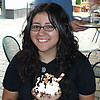
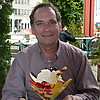
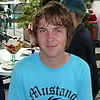
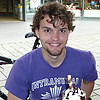
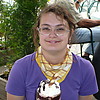
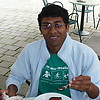

![]()
International Education Office
Kevin Koch
kevinak@goshen.edu
+1 (574) 535-7346